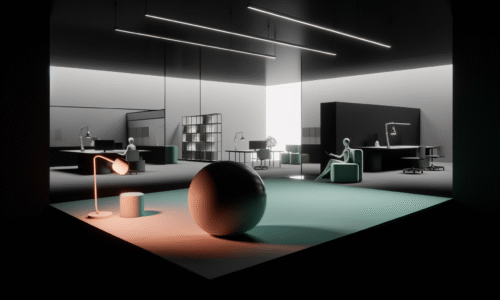Tesla’s AI Journey: From Grand Dojo Visions to a Strategic Shift. Why was Tesla’s Dojo called an “evolutionary dead end”?
Table of Contents
- The Death of Dojo: What Elon Musk Confirms About Tesla’s Shutdown
- The New Strategy: AI5 and AI6 Take Center Stage
- Why Nvidia Won This Round (And What It Means for Everyone Else)
- Industry Implications: The Ripple Effects of Tesla’s Pivot
- What This Means for AI Strategy: Lessons from the Dojo Debacle
- The Road Ahead: What to Watch in Tesla’s AI Evolution
- Conclusion: When Evolution Demands Revolution
The Death of Dojo: What Elon Musk Confirms About Tesla’s Shutdown
Tesla just pulled the plug on one of its most ambitious AI projects, and the reverberations are shaking up Silicon Valley’s chip wars. In a stunning admission on X, Elon Musk confirmed that Tesla has shut down its in-house Dojo AI training supercomputer effort, calling Dojo 2 “an evolutionary dead end.” The company that promised to revolutionize autonomous driving with custom silicon is now pivoting to what Musk calls a “unified chip roadmap” centered on new AI5 and AI6 processors.
The details are as dramatic as they are definitive. Musk wrote on X that “once it became clear that all paths converged to AI6, I had to shut down Dojo… as Dojo 2 was now an evolutionary dead end,” effectively confirming widespread reports that Tesla had disbanded its Dojo team. This isn’t a pause or a strategic realignment—it’s a full stop.
What’s getting axed? Plans for the Dojo 2 factory and the in-development D2 chip are being dropped alongside the dedicated Dojo program. The organizational fallout has been swift and severe. Coverage indicates Tesla disbanded the Dojo team, with leaders departing and remaining staff reassigned to other compute initiatives. In a particularly telling exodus, approximately 20 Dojo team members have already jumped ship to form DensityAI, founded by former Dojo head Ganesh Venkataramanan.
The irony here is palpable. Tesla’s original Dojo cluster combined Nvidia GPUs with Tesla’s custom D1 chips, and Musk had recently talked up a second cluster “at scale” in 2026 before this dramatic reversal. From grand ambitions to graveyard in record time—even by Tesla standards, this is whiplash-inducing.
The New Strategy: AI5 and AI6 Take Center Stage
So what replaces Dojo? Tesla is shifting to a unified in-house chip strategy featuring AI5 (primarily for onboard Full Self-Driving inference) and AI6 (designed for both onboard inference and large-scale AI training). The manufacturing partnerships reveal the scale of this pivot: TSMC and Samsung are involved in AI5 and AI6 production, respectively.
Musk’s rationale, while characteristically terse, speaks volumes about the technical challenges Tesla faced. He explained that all internal “paths converged to AI6,” making further investment in a bespoke Dojo 2 stack pointless. Interestingly, Musk framed the future “Dojo 3” idea as effectively many AI6 SoCs on a board rather than a separate D-series path—a conceptual sleight of hand that allows him to claim Dojo “arguably lives on” while completely abandoning the original architecture.
This unified approach makes strategic sense from a resource allocation perspective. Instead of maintaining separate development tracks for training and inference chips, Tesla can focus its engineering firepower on a single, scalable architecture. It’s the semiconductor equivalent of consolidating your tech stack—painful in the short term, potentially transformative in the long run.
Why Nvidia Won This Round (And What It Means for Everyone Else)
Here’s the uncomfortable truth Tesla learned the hard way: building AI training hardware is monumentally harder than it looks, especially when you’re competing against Nvidia’s decade-plus head start. Independent commentary notes Tesla never turned off its Nvidia GPU clusters—the original success metric Musk set for Dojo—underscoring Nvidia’s persistent lead in training performance, software stack maturity, and ecosystem advantages.
Reporting indicates Tesla will increase reliance on external technology partners (notably Nvidia and others) as it unwinds the dedicated Dojo effort. This isn’t just a technical decision—it’s an admission that Nvidia’s CUDA ecosystem, developer tools, and raw performance create a moat that’s nearly impossible to cross, even with Tesla’s resources.
The competitive gravity of Nvidia’s platform extends beyond just hardware specs. It’s about:
- Ecosystem lock-in: Thousands of AI researchers trained on CUDA
- Software maturity: Years of optimization and debugging
- Network effects: Every major AI breakthrough validated on Nvidia hardware
- Risk mitigation: Why bet your autonomous driving timeline on unproven silicon?
For other companies contemplating custom AI chips, Tesla’s retreat should prompt serious soul-searching. If a company with Tesla’s engineering prowess, capital resources, and specific use cases can’t make custom training silicon work, who can?
Industry Implications: The Ripple Effects of Tesla’s Pivot
Tesla’s Dojo shutdown sends shockwaves through multiple sectors of the tech industry. For chip manufacturers, it validates the “build once, sell many” model over bespoke solutions. For AI companies, it highlights the risks of hardware dependencies. And for investors, it raises questions about the sustainability of the current AI hardware gold rush.
The talent diaspora from Tesla’s Dojo team could seed the next generation of AI hardware startups. With approximately 20 team members forming DensityAI under former Dojo head Ganesh Venkataramanan, we’re likely to see new approaches to AI acceleration that learned from Dojo’s failures. This brain drain represents both a loss for Tesla and a potential catalyst for innovation elsewhere.
Tesla’s shift to external compute providers and cloud partnerships also signals a broader trend: the commoditization of AI training infrastructure. As more companies realize the futility of competing with established players, we’ll likely see a consolidation around a few dominant platforms, with differentiation happening at the software and application layers rather than silicon.
What This Means for AI Strategy: Lessons from the Dojo Debacle
For enterprises developing AI strategies, Tesla’s Dojo shutdown offers several critical takeaways:
- Know Your Core Competencies: Tesla excels at manufacturing, battery technology, and systems integration. Custom AI training chips? Not so much. The lesson: stick to what you do best and partner for the rest.
- Timing Matters: Entering a market dominated by an entrenched player with massive network effects requires either revolutionary technology or perfect timing. Tesla had neither.
- Flexibility Over Pride: Musk’s willingness to kill a high-profile project shows strategic flexibility. Too many companies double down on failing initiatives due to sunk cost fallacy.
- Unified Architecture Wins: Tesla’s pivot to AI5/AI6 demonstrates the power of consolidated development. Instead of maintaining multiple chip lines, focus on a scalable, versatile platform.
- External Partnerships Aren’t Weakness: Relying on Nvidia or AMD for training compute isn’t admitting defeat—it’s acknowledging reality. Save your innovation budget for where you can actually differentiate.
The Road Ahead: What to Watch in Tesla’s AI Evolution
As Tesla navigates this transition, several key developments warrant attention:
- AI6 Architecture Details: Musk positioned AI6 as the convergent architecture for both training and inference. Technical specifications, node details, packaging innovations, and software toolchain support will reveal whether this unified approach can deliver on its promises.
- Manufacturing Execution: With TSMC handling AI5 and Samsung producing AI6, watch for updates on process nodes, volume ramps, and yield rates. Any manufacturing hiccups could derail Tesla’s autonomous driving timeline.
- Compute Procurement Strategy: Any new Nvidia or AMD orders, or cloud partnerships, will signal how much training Tesla offloads. Large purchases would confirm Tesla’s commitment to external solutions.
- Competitive Response: How will other automakers and AI companies react? Tesla’s retreat might embolden others to abandon custom silicon dreams or, conversely, create an opening for those willing to invest where Tesla wouldn’t.
Conclusion: When Evolution Demands Revolution
Tesla’s Dojo shutdown represents more than just another cancelled project—it’s a reality check for the entire AI industry. In admitting that Dojo 2 was “an evolutionary dead end,” Musk acknowledged a fundamental truth: sometimes the best strategy is knowing when to quit.
For companies navigating the AI landscape, Tesla’s pivot offers a masterclass in strategic flexibility. The future belongs not to those who stubbornly pursue every initiative, but to those who can recognize when evolution demands revolution. As AI systems become increasingly complex and interconnected, the ability to adapt, pivot, and integrate becomes more valuable than any specific technology.
The death of Dojo might seem like a failure, but it’s actually Tesla clearing the deck for what comes next. By consolidating around AI5 and AI6, leveraging external partnerships, and focusing on their core differentiators, Tesla is positioning itself for the next phase of AI competition. The question isn’t whether they were right to kill Dojo—it’s whether they killed it soon enough.
In this rapidly evolving landscape, having the right AI strategy is crucial. Whether you’re building custom solutions or leveraging existing platforms, the key is maintaining flexibility while driving toward clear business outcomes.
Curious about how adaptive AI strategies can transform your business? Connect with us on LinkedIn to explore how VALIDIUM’s dynamic AI solutions can help you navigate these complex decisions and stay ahead of the curve.


